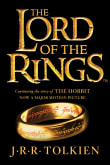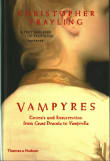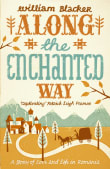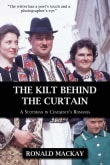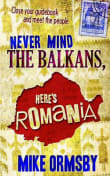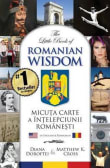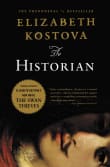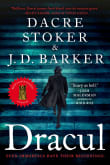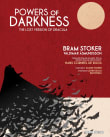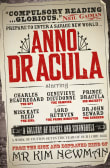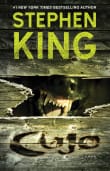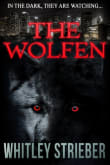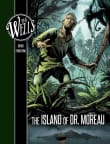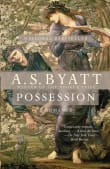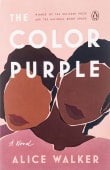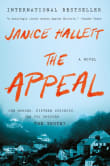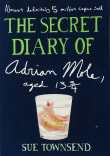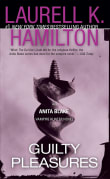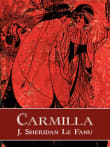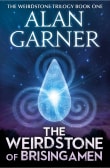Dracula
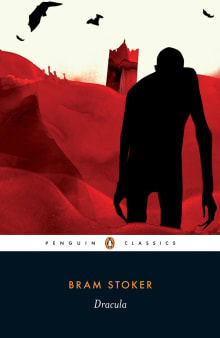
Book description
'The very best story of diablerie which I have read for many years' Arthur Conan Doyle
A masterpiece of the horror genre, Dracula also probes identity, sanity and the dark corners of Victorian sexuality and desire. It begins when Jonathan Harker visits Transylvania to help Count Dracula purchase a London…
Why read it?
27 authors picked Dracula as one of their favorite books. Why do they recommend it?

I picked up Dracula in my desire to read more classics. I was not prepared for what a page-turner it is! The first chapter will send chills up your spine and the pace never slows. I especially love how Stoker employes multiple narrators and narrative devices (letters, journal entries, etc.) to tell the story of the evil and mysterious Count Dracula. Happy to say that the original Dracula story is also the best.

The most iconic and somehow most misrepresented vampire story of all time. I read this book because it was iconic and for no other reason. It was not long before I began to see this book's Christian themes and messages. Though the book may not be explicitly Christian, the influences and messages are most apparent in Mina Harker.
I loved how the character of Mina becomes a prototype of what people would eventually call “The Final Girl”, not because of her physical strength or survival instincts, but because of her unwavering faith in God. I knew this was essentially a…
From Ryan's list on horror and sci-fi with a Christian message.

Well, you have to start with Stoker’s blockbuster, right? Reading it today gives you a fascinating window into the Victorian mind and the sort of things people found shocking or upsetting in those days. The Count himself, although a genteel character, is very, very different from the ‘standard’ Dracula we think of today, thanks to the likes of Bela Lugosi or Christopher Lee.
Stoker is the one who introduced all the mirrors, garlic, and crucifix stuff to vampire lore–none of that was present in the old legends on which he based his story.
From Richard's list on Dracula and other vampires.

Gothic fiction holds a special place in my reading repertoire, and Stoker’s book is perhaps one of the best gothic novels written. I’ve read it at least three or four times. It is a wonderful tale, and the writing evokes the gothic ethos perfectly. If you’ve only seen the movie with Bela Lugosi, read the novel. It is wonderfully written.
From Mike's list on speculative fiction.

I read this book at the tender age of ten and instantly became ever so slightly obsessed with vampires; I love how the atmosphere builds slowly, sucking me to the point that I am genuinely afraid that the wolves might attack.
The description of the locations and the journal and letter writing are wonderful story breakers, and what a uniquely wonderful story it is. For me, it is a timeless masterpiece.
From L.W.'s list on supernatural with a sprinkling of realism.

I can’t get enough of this supernatural classic, which is made all the more vivid by the way its story unfolds through letters, telegrams, diary entries, and newspaper clippings. It is the found-footage horror story of its era.
Like Frankenstein, it has been adapted hundreds of times, officially and unofficially, into nearly every medium, yet the original novel is unparalleled for holding the reader in its icy grip. Stoker brought his own fears to the page, and I am always surprised at how, in just a few pages, they become my fears, as well.
From David's list on chills and thrills on a dark and stormy night.

Older than the rest and still one of the best, Dracula was my introduction to the epistolary format. My eleven-year-old self was pleasantly surprised when the diaries and letters never gave way to straight narration. Reading the book gave me the chance to see how much detail was left out of the various movie adaptations.
After a slow start with Harker’s travelogue, the book unleashed some gruesome and haunting imagery. I thought Renfield’s scenes were especially chilling. I can’t wait to check out the complete, uncut version of the novel, released in Sweden as Powers of Darkness, to see…
From Amanda's list on creepy epistolary horror novels.

As an avid reader-writer, picking a No. 1 was not easy. But I gotta go with the master here, and, as you can see, I really don't care when a novel was published.
This is one of the best suspense (more than horror) novels ever written, period. I read this book when I was quite young, 9 or 10, and it scared the sh** out of me. Reading this book as a much older man, I am amazed at its fluidity and mastery. Stephen King pales in comparison.
It's an absolute masterpiece of breathless anticipation, dread, and doom. Subtract the…

Another book I've read so many times and never tire of.
The structure is very clever, being told through the means of letters, diaries, and newspaper accounts - something I also like to incorporate in my own Victorian novels. Drawing on previous works that contain vampiric themes, this turns the genre into a rip-roaring sensation. It really is a masterpiece that deserves its success - as eternal as the vampire living across the centuries.
From Essie's list on inspirational and eerie Gothic.

The king of vampires, and arguably the king of Gothic, Bram Stoker’s Dracula is, at minimum, a classic representation of the Gothic. It is also an espionage tale underneath.
Although not elaborated in great detail (it is however, in the Swedish translation/interpretation of Dracula, titled Powers of Darkness), Count Dracula has a world domination plot he intends to enact. The details are vague but do seem to involve the numerous coffins he has placed around London. Are these all for him or for the legion of the undead he is creating, starting with female protagonist Mina Harker’s best…
From Wade's list on the Gothic-espionage connection.
Want books like Dracula?
Our community of 12,000+ authors has personally recommended 100 books like Dracula.
